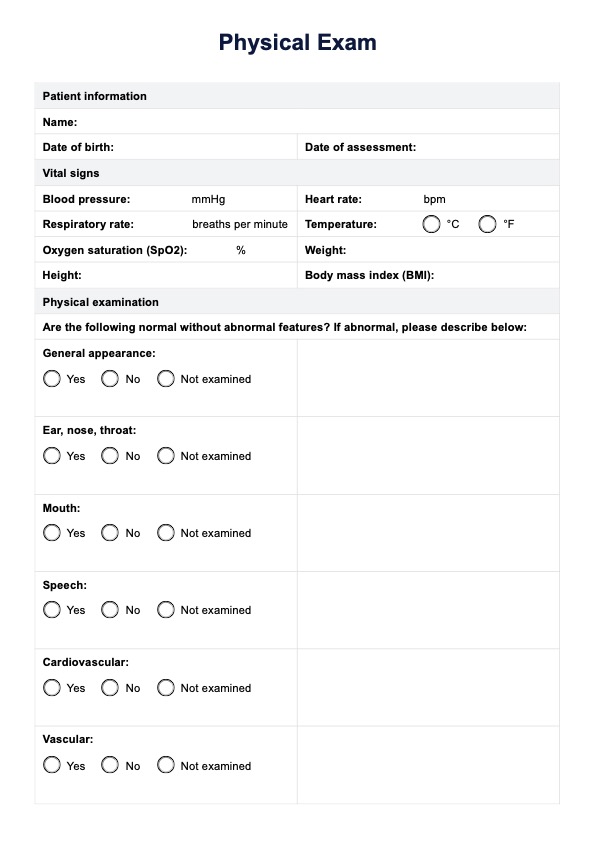A physical exam is typically conducted by primary care providers, such as physicians, family doctors, registered nurses, or nurse practitioners. This is because conducting a physical examination requires medical training to complete the required palpitation, percussion, auscultation, and interpretation of any additional tests such as histology or radiology.

Physical Exam Template
Access a comprehensive Physical Exam Template to streamline your assessment process with patients.
Physical Exam Template Template
Commonly asked questions
Not every patient will have the same requirements for their physical exam. While some patients will be seeking an integrative physical check-up, others are required to have specific examinations due to their family history or diagnosed conditions. As such, it is important to ensure your physical exam reflects the individual nature of your patients and can be flexible to adapt to any abnormalities discovered during the exam.
One of the useful features of this template is that it can be completed digitally using interactive check-boxes and text boxes. Alternatively, you can print out the template and fill it in by hand if you prefer.
EHR and practice management software
Get started for free
*No credit card required
Free
$0/usd
Unlimited clients
Telehealth
1GB of storage
Client portal text
Automated billing and online payments











